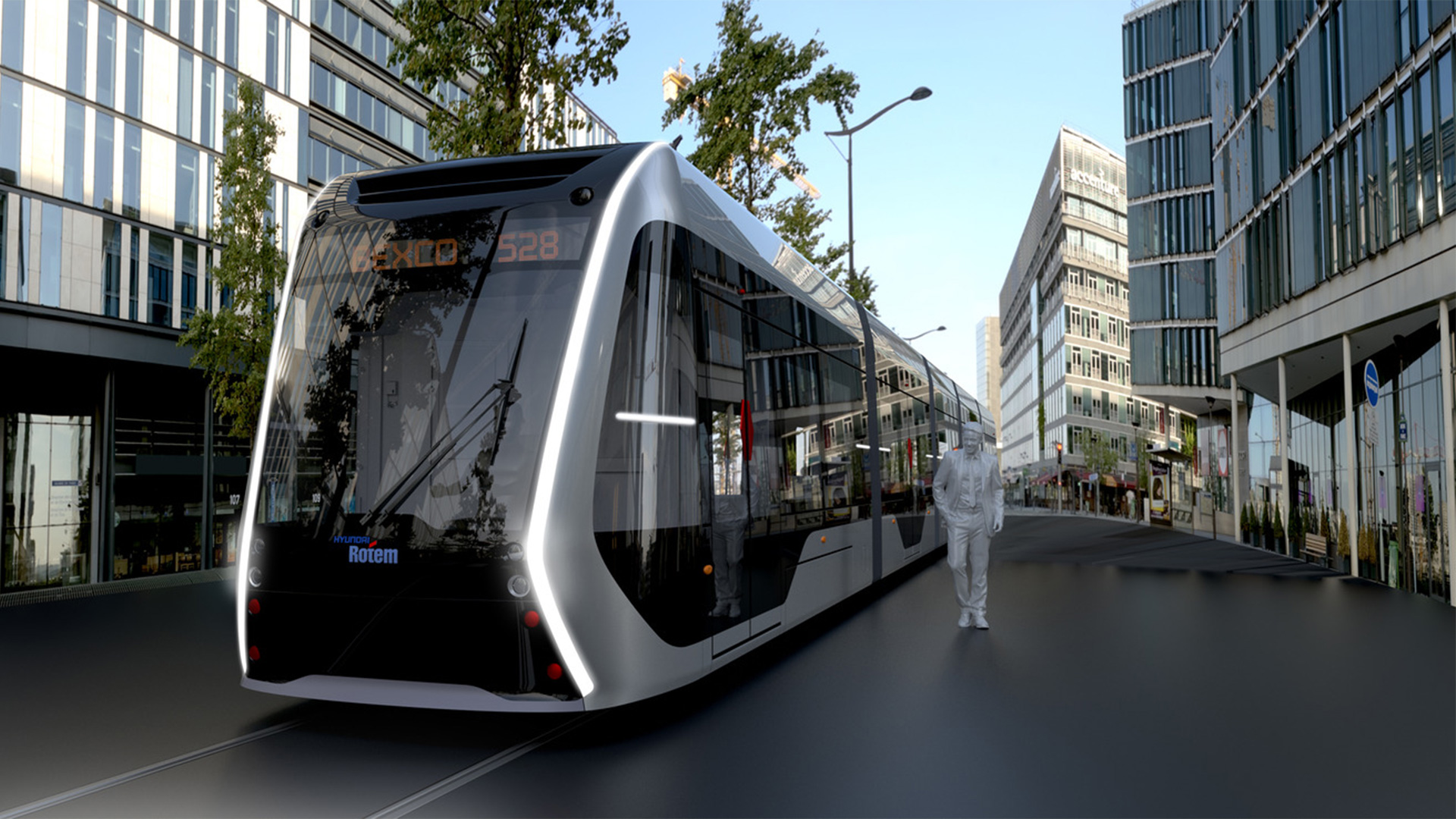
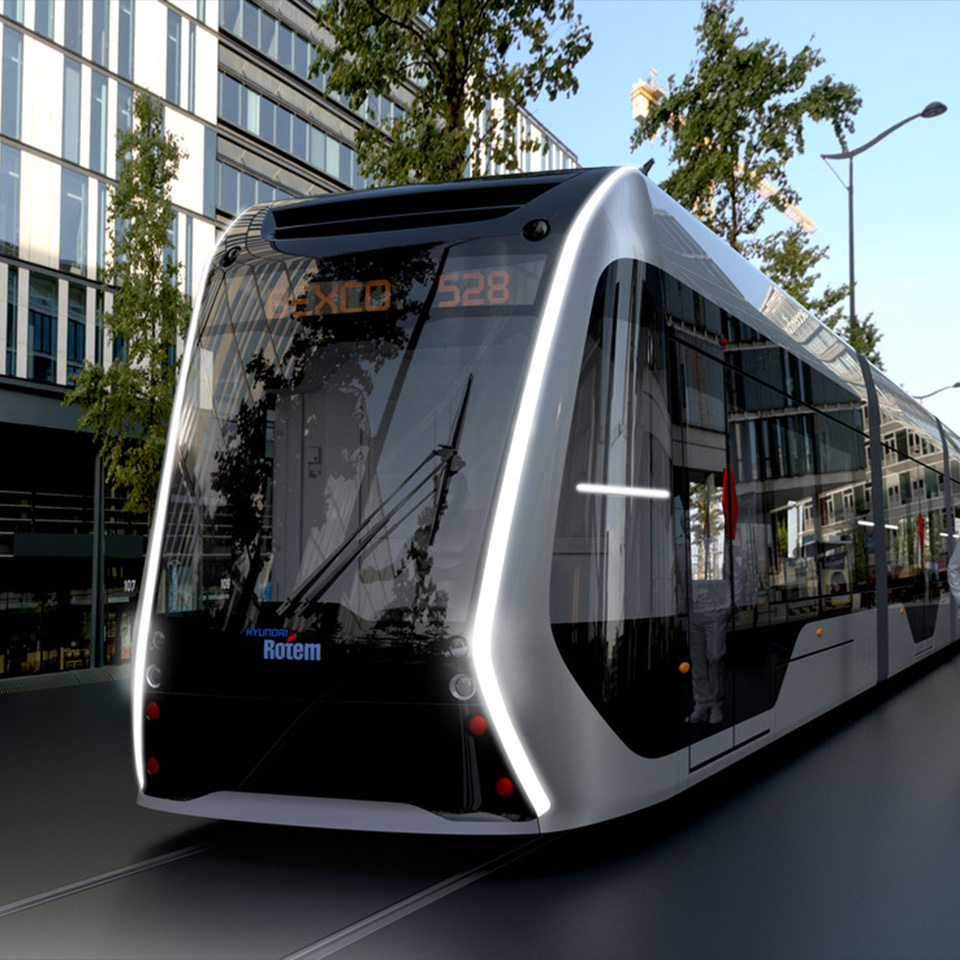


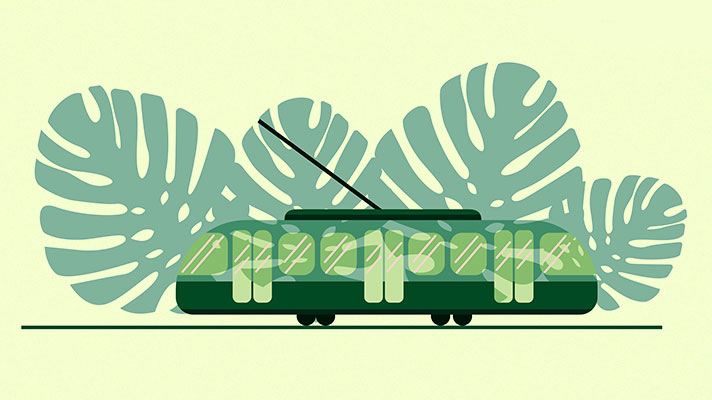
City centers are always suffering from traffic jam. Roads are congested in rush hours, and there’s always a shortage of parking places. Public transport connects all corners of the city center and takes care of these problems to a certain level. How convenient the public transport is an index in finding out how developed a city is. Public transport, which has operated with the focus on public convenience, is focusing on being eco-friendly these days. Using public transport itself helps reducing exhaust gas, but now there are continuous efforts to operate public transport in eco-friendly vehicles. Here are some eco-friendly operation cases of most well-known public transport means like buses, trams and taxis.
1. Switzerland’s TOSA electric bus
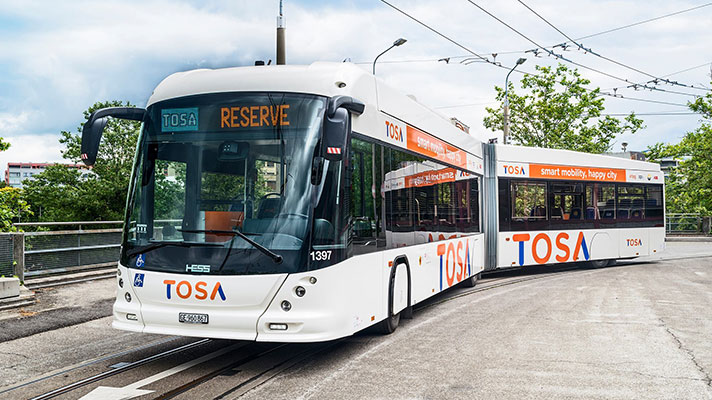
Let’s look into ‘bus’, the public transport means that connects all corners of the cities more than any other means. Switzerland is one of the leading countries that have successfully adopted eco-friendly buses. TOSA (Trolleybus Optimisation Systeme Alimentation) electric bus is their star. Resolving power issues is most important in smooth operation of electric buses. This bus is powered by ‘flash charging’ technology. In just 15 seconds, electric bus battery is charged with 400kW power thanks to this technology.
TOSA bus has this charging machine every 3, 4 stations and gets charged whenever the passengers get on and off the bus. As it can be charged while in operation, it doesn’t require a high capacity battery and services many passengers with a wider space. Power used for charging is obtained through eco-friendly waterpower generation in Switzerland canals, making it a model case in eco-friendly public transport system.
2. Busan’s electric bus ELEC CITY
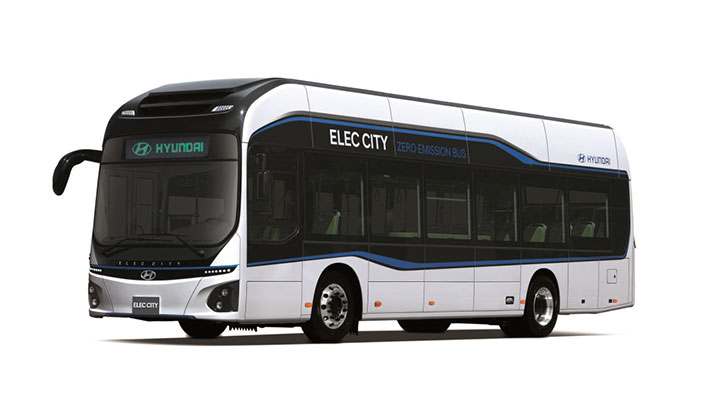
In Korea, Busan city is leading the implementation of electric buses. Electric bus ‘ELEC CITY’, which roams the Busan city, is an electric bus which Hyundai Motors worked on for about 8 years since 2010. In 2017, their first car began servicing passengers. ELEC CITY utilizes 256 kWh high capacity lithium ion polymer battery which allows it to drive up to 319 km with a one-time charging (72 minutes) and can drive 170 km with a 30-minute short charging.
ELEC CITY is now only great in its driving distance but also for its passenger safety and convenience specifications. As it is designed to be a low floor bus, the body level is high, and its interior seems wider while front and back entrances have inclined plates instead of stairs to make it easy for wheelchairs and strollers to get in and out. Comfortable hip rest and interior freight storage is installed inside to enhance convenience, and the front and back entrances have ultrasonic sensors for safe getting on and off.
1. Trams in Warsaw, Poland
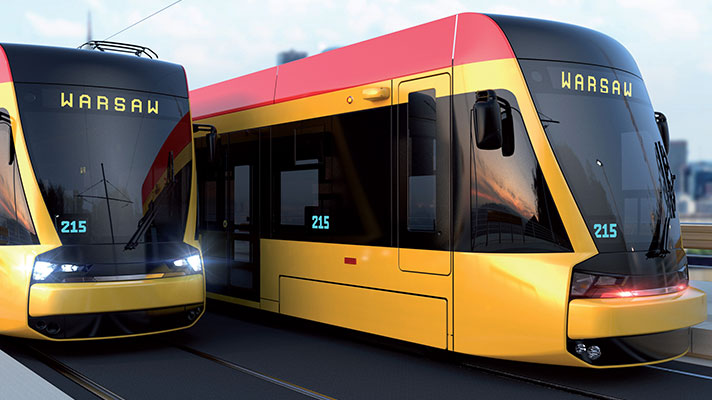
The second public transport we will be taking a look at is ‘tram’. Trams are surface cars that use electricity instead of fossil fuels to drive on the road rails, which emits less pollutants and is effective in reducing micro dusts. Many countries have been using trams since long ago. It’s not a rare scene to see trams glide across the city center. South Korea has seen active development of tram technology these days. Hyundai Rotem won an order for trams that are to be operated in Warsaw city, Poland, last June.
It’s very meaningful to have won a project in Europe, where trams are from. They received a great evaluation in that their trams have a propulsion device with high energy efficiency, and they suggested ways to reduce power consumption through optimized design. Hyundai Rotem’s trams which will be delivered to Poland are consisted of 5 module 1 formation (two-way/one-way operating room) and 3 types of 3 module 1 formation. They are designed to have a maximum speed of 70 km and can load about 240 (160 people/3 modules) passengers. Also, they will be produced to be operated wirelessly (without outer power source) when the vehicle is at a certain distance (at least 120 m) in consideration of the special tram operation environment and the client’s requests.
2. Hyundai Rotem’s hydrogen tram
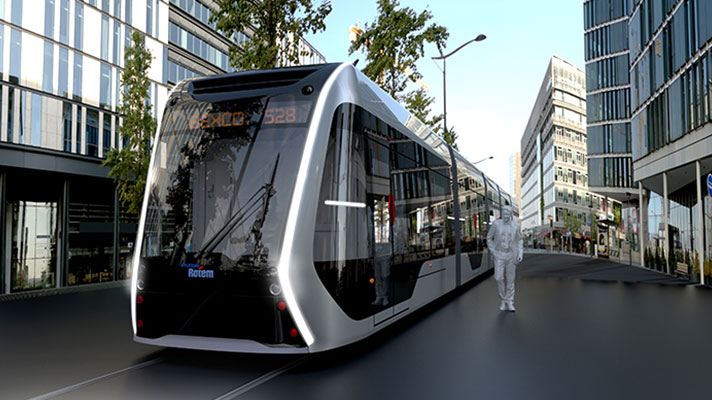
Trams are going through a transition phase to move onto hydrogen trains. Hydrogen trains are clean eco-friendly trains that do not emit pollutants aside from water. You can also save on power infrastructure construction and maintenance and repair fees as they do not require power supply system like wires and substations, etc. Above all, as trains connect long distances and can convey many people, we can expect to see great environment friendliness and efficacy of the hydrogen energy.
In Korea, Hyundai Motors and Hyundai Rotem are to complete prototype train by 2020 after concluding MOU for hydrogen train development. Hyundai Motors will assist with hydrogen fuel cell provision and related technologies while Hyundai Rotem will manufacture hydrogen train and develop and verify system interface between hydrogen fuel cell and vehicle. This tram is being developed with the goal of achieving maximum 200 km driving distance with a single charging and a maximum speed of 70 km/h.
1. France’s water taxi
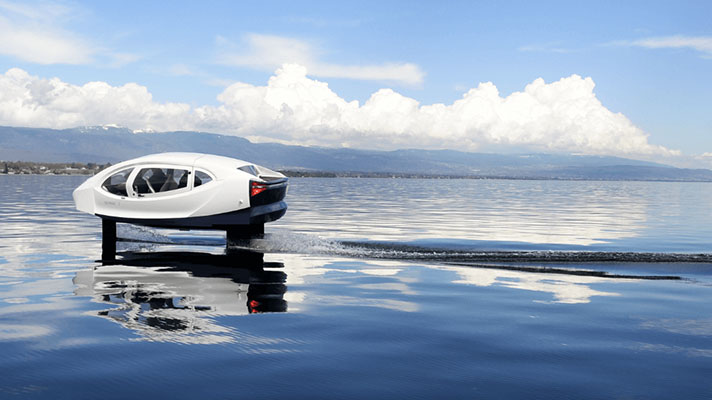
The third public transport means is ‘taxi’. Taxis are the most sure and comfortable public transport, but they haven’t been regarded as an eco-friendly transport as they cannot service as many passengers as buses or trams. But recently there has been much concern regarding eco-friendly taxis as well as technological development; various attempts are being carried out around the world.
In France, water taxi that flies over the water surface is creating a buzz. The principle is same as that of an airplane. Airplanes fly thanks to the air lift created by the difference of its wings’ upper and lower cross-sections. Seabubbles of France applied the same principle onto water. Their water taxi has 5 seats including the driver’s seat and moves automatically when the passengers are seated, and its doors are closed. A maximum speed is 28 km/h, and when the speed reaches 12 km/h, it flies and drives just above water surface, which prevents any danger caused by water movements. A stabilization device is in place, which makes it quite comfortable inside. This water taxi uses 100% electricity power and does not emit greenhouse gases like CO2. It can go on with low power as well. You can drive 40 km for a 5-hour charging. Its own station creates electricity through water movement, solar power and wind power which is used to charge the water taxi.
2. Ulsan’s hydrogen taxi
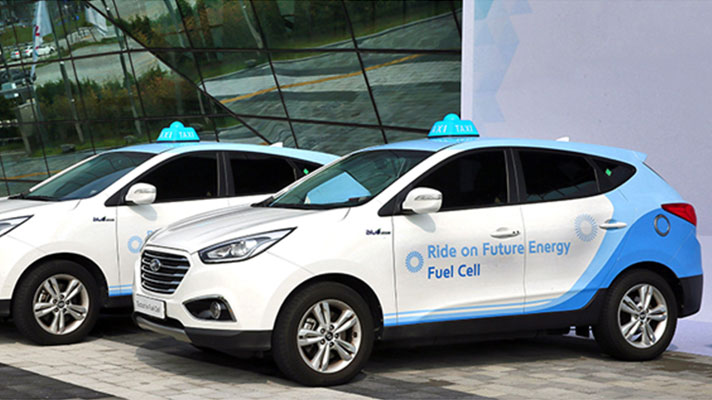
South Korea is carrying out trial operation of taxis operating with hydrogen fuel cell. It’s Hyundai Motors’ Tucsonix hydrogen car. The trial drive began in Ulsan in 2016, and its service has also started in Seoul from September 2019. Hydrogen cars do not use fossil fuel and hence do not create air pollutants like micro dust nor greenhouse gases; they just let out water created through a chemical reaction between hydrogen and oxygen. As they suck in the oxygen from outside and create electricity, they also purify the air as they filter out pollutants in the air during the process.
Hydrogen cars are especially able to purify as much micro dust as 2 mid-sized diesel cars let out with just a single car as they use a high functioning air purification filter. We can anticipate the effect hydrogen taxis will have on improving city center air quality. Hydrogen taxis that drove around Seoul city since September 2019 drove about 30,000 km on average and serviced 22,000 passengers. At the moment, there are 10 hydrogen taxis operating in Seoul.
As the whole world is taking greater interest in air environment, it can be expected that we will see the expansion of eco-friendly public transport to improve air quality through reducing micro dust and exhaust gas, etc. South Korea will be seeing more active implementation of electric buses. Seoul City implemented 135 electric city buses during the last 2 years and has announced that they will implement 325 extra buses, which is more than twice as many. More than 10 local governments are pursuing implementation of trams as they require less construction costs than subways or light rails. Hydrogen taxi operation will be expanded for more large cities, up to around 80,000 by 2040.
At the moment, as eco-friendly public transport is in its implementation stage, they feel special, so special that people will want to take photos when they come across one. But the day when we feel so familiar with them will come soon. Using public transport and paying attention to eco-friendly transportation is how you protect the blue sky and clean air. Please don’t forget that!
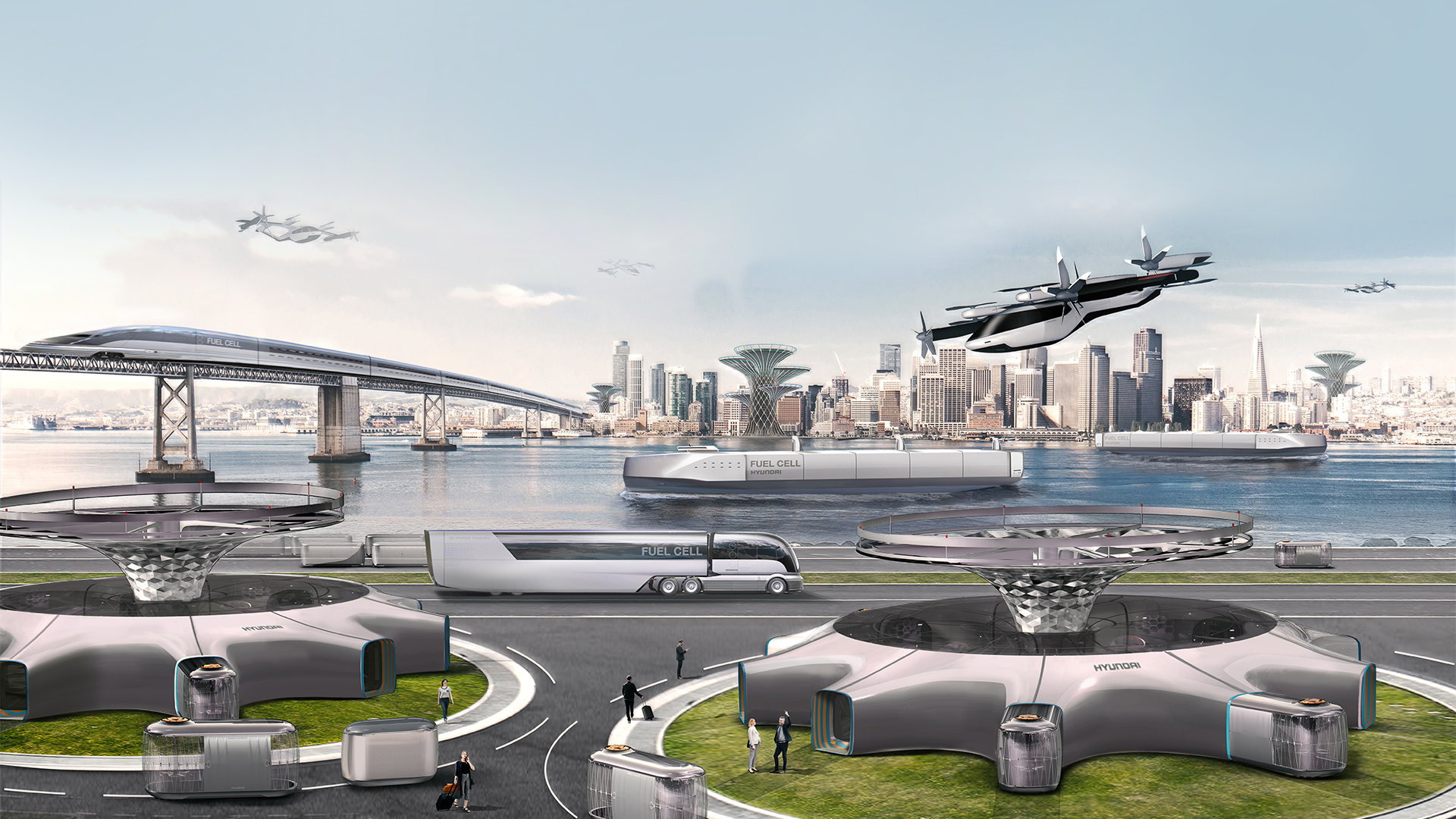
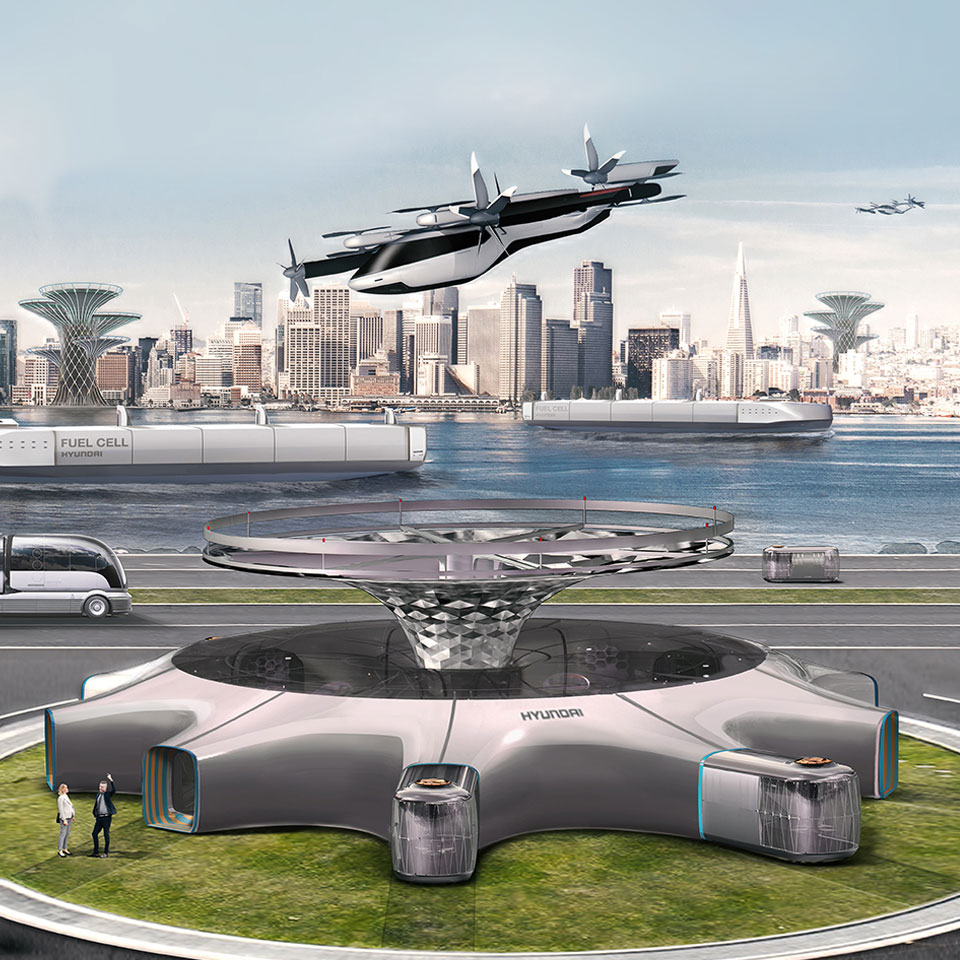
A Paradigm Shifter, Shifting Towards a Hydrogen Society
2022.01.17 12min read